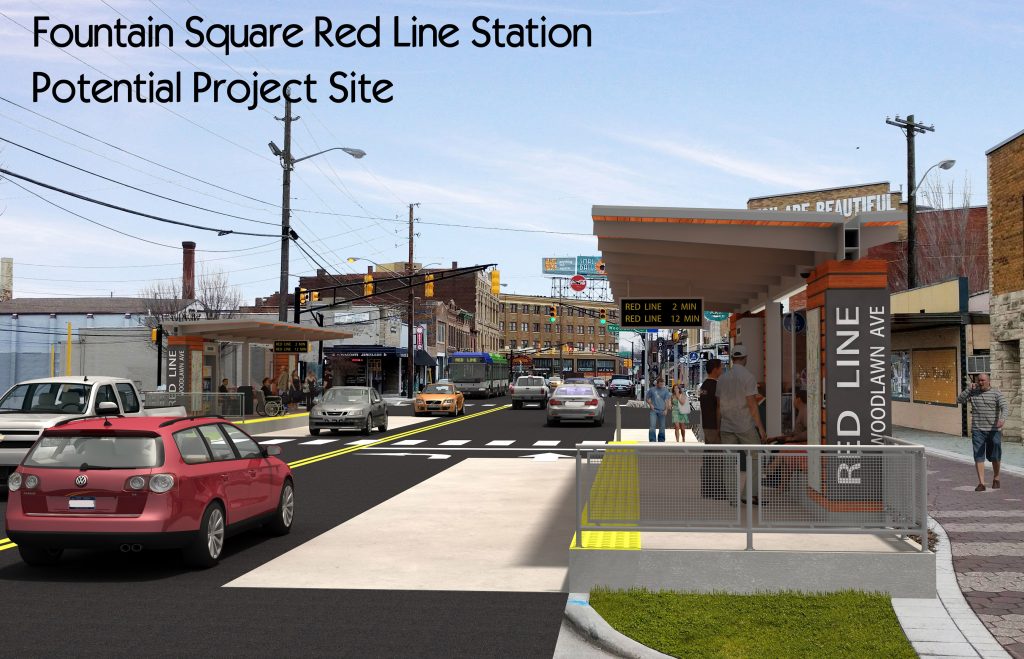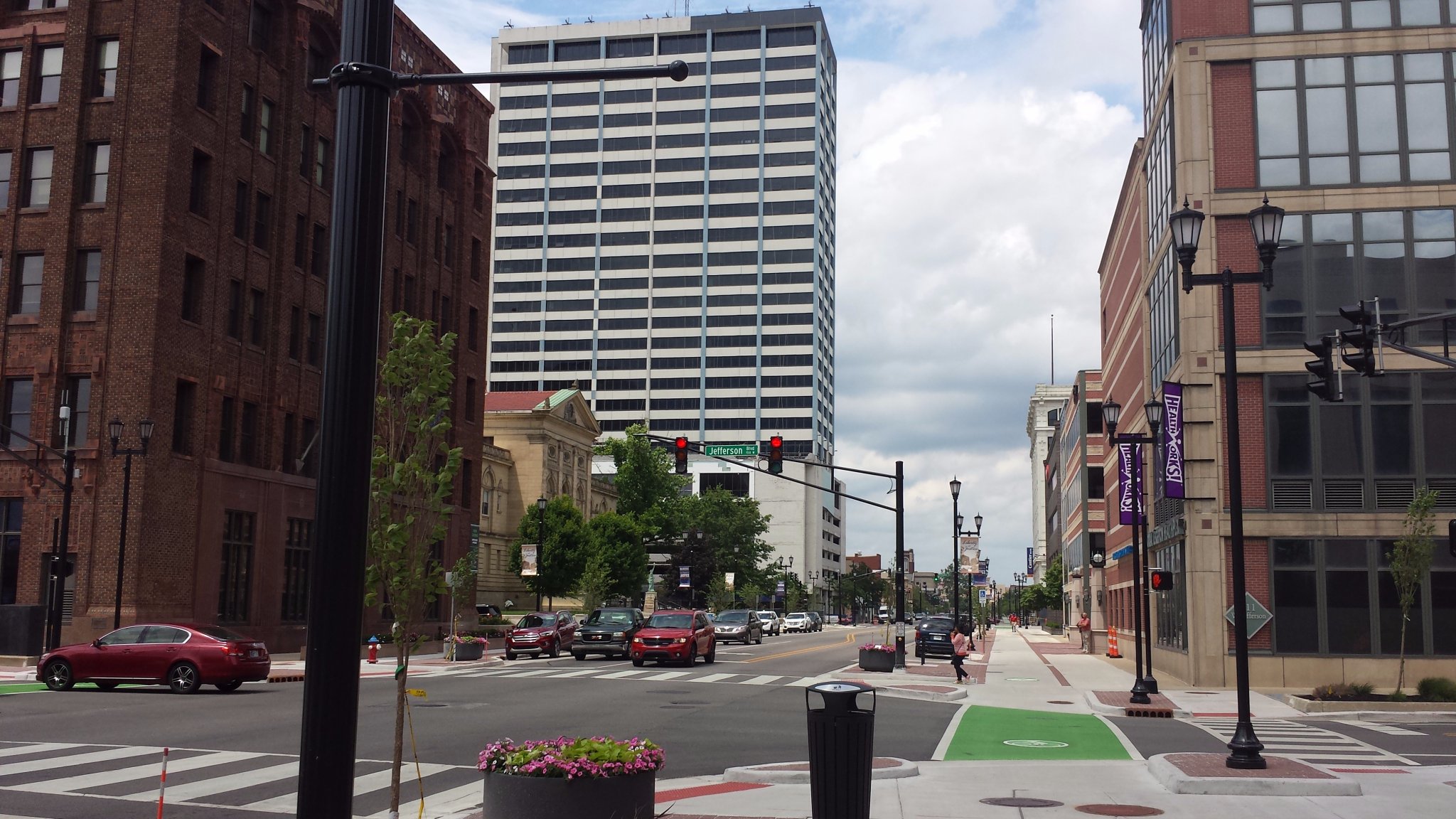Announcing the winners of our three creative placemaking grants

Transportation for America is pleased to announce the selection of three communities to receive $50,000 creative placemaking grants through our Cultural Corridor Consortium program.

Transportation for America is pleased to announce the selection of three communities to receive $50,000 creative placemaking grants through our Cultural Corridor Consortium program.

A bike lane that only lasts one block is not particularly useful. That’s why a Complete Streets approach is about more than remaking one given street. It’s about creating a connected network, where people can easily travel anywhere they need to go by a variety of travel modes.
A similar philosophy is the basis of a new project we are doing with Indiana communities along the border of Michigan, in a region known as “Michiana.” Together with the Michiana Area Council of Governments (MACOG), we are helping to bring together communities interested in Complete Streets to make the entire region safer and more convenient for everyone, no matter their age, ability, income, race, or how they choose to travel.
In this version of our Fiscal Implications research, Smart Growth America examined four different scenarios for the City of Indianapolis—two urban and two sub-urban. We found that both of the sub-urban scenarios would generate negative fiscal impacts for the City and school district.
 Challenges and opportunities on the whiteboard at a Complete Streets workshop in Indianapolis last week. Photo by the Indiana Complete Streets Coalition, via Twitter.
Challenges and opportunities on the whiteboard at a Complete Streets workshop in Indianapolis last week. Photo by the Indiana Complete Streets Coalition, via Twitter.
In 2012 the Indianapolis-Marion County City-County Council unanimously passed the Indianapolis Complete Streets ordinance, a policy intended to ensure that streets are designed, built, operated, and maintained to be safe and accessible for everyone, regardless of whether they travel by bus, bike, foot or personal vehicle. Indianapolis’ Complete Streets policy was the best in the nation that year, and remains one of the strongest city ordinances adopted to date.
Since the policy’s passage, Indianapolis staff and Health by Design partners have been working to ensure successful implementation of the policy and to monitor and track related performance measures. To help accelerate the move from policy to implementation, Smart Growth America’s National Complete Streets Coalition held a Complete Streets implementation workshop on June 10 and 11, 2015, as part of a free, grant-funded technical assistance program. The workshop provided additional tools, resources and guidance for policy implementation. It also offered an opportunity to communicate the benefits of Complete Streets and local project examples to the public.

The City of Franklin, TN is one of 14 communities that will receive a free technical assistance workshop from Smart Growth America in 2015.
Smart Growth America is pleased to announce the 14 communities selected to receive free workshops in 2015 as part of our free technical assistance program.

The City of Indianapolis is embarking on Plan 2020: The Bicentennial Plan for Indianapolis, an unprecedented initiative to update and integrate the City’s core planning documents. To complement this effort, Indianapolis officials and local residents met with representatives from Smart Growth America on June 11 and 12, 2014 as part of a free, grant-funded technical assistance program. The workshop focused on how shifting development patterns towards more compact, transit-oriented development could benefit the local economy and local government finances, both of which are important components of Plan 2020.

The Milton-Madison bridge undergoing construction. Photo via the Milton Madison Bridge Project.
The reconstruction of a bridge spanning the Ohio River between Madison, IN and Milton, KY is more than just a long overdue repair. It is a restoration of a landmark, a way to better connect two interdependent communities and a means of bringing smart growth improvements to both sides of the river.
The existing Milton-Madison bridge had become functionally obsolete, deteriorating badly despite multiple rehabilitations. Its 20-foot wide road deck was too narrow to handle modern traffic and in August 2008, the Kentucky Transportation Cabinet and the Indiana Department of Transportation launched the Milton-Madison Bridge Project in an effort to replace the bridge.

Major Tool and Machine expanded its Indianapolis factory onto the former site of Ertel Manufacturing, once a brownfield. The site was remediated through a combination of grants, tax increment financing and federal programs. Photo via Facebook.
When Ertel Manufacturing closed down in 2002, it left behind land contaminated with half a dozen different toxic substances. After spending millions of dollars to clean up and remediate the site, the City of Indianapolis has won legal victory over the company that insured Ertel Manufacturing—and the City is putting that money back into remediation efforts.
The City of Indianapolis recently won a $6 million insurance settlement over the Ertel Manufacturing site, which was abandoned after the company filed for bankruptcy in 2002. The victory is one of “insurance recovery” (or “insurance archeology”), where insurers are held liable for the cleanup costs of polluting businesses that held comprehensive general liability (CGL) policies. It is most often used in instances where the business is now bankrupt or is not financially viable and the CGL policies were written between 1945 and 1985.

Straughter Body Shop prior to demolition and remediation (left) and after (right). The project was made possible by SEP funding. Photos via Meredith Gramelspacher.
The following is a guest post from Meredith Gramelspacher, Director and General Counsel of the
Indiana Brownfields Program
Indiana’s toolbox for creative brownfields financing includes one source that is seldom used outside of Indiana: Supplemental Environmental Projects.
Supplemental Environmental Projects (SEPs) are used by the Indiana Department of Environmental Management (IDEM) Office of Enforcement in negotiating settlements of enforcement cases. These environmentally-beneficial project improve, protect, or reduce risks to public health or the environment. A regulated entity agrees to undertake the project in further settlement of an enforcement action, but which the regulated entity is not otherwise legally required to perform. In certain cases, IDEM agrees to allow a respondent to make a cash payment of an agreed-upon dollar amount directly to the Indiana Finance Authority in lieu of an assessed civil penalty for use on a brownfield project in the city, town or county in which the violation underlying the enforcement action occurred. The Indiana Brownfields Program then coordinates with the beneficiary community to select a brownfield property at which to utilize the SEP Funds consistent with Brownfield SEP guidelines.

On Friday, January 11th, officials from three federal agencies visited Indianapolis, IN for a first-hand perspective at how federal funding and provisions have benefited local environmental and redevelopment projects.
During the visit Indianapolis Mayor Greg Ballard was enthusiastic about several innovative development projects being done in the city, including brownfield remediation efforts and the Indianapolis Cultural Trail. The Cultural Trail is a multi-use path that connects neighborhoods, Cultural Districts and entertainment amenities and the Indianapolis ‘bike hub’ to help make bicycle commuting easier and more viable. The award-winning 8-mile path encircles downtown Indianapolis, passing through the city’s visitor and business district, its arts and cultural hubs, and several neighborhoods.